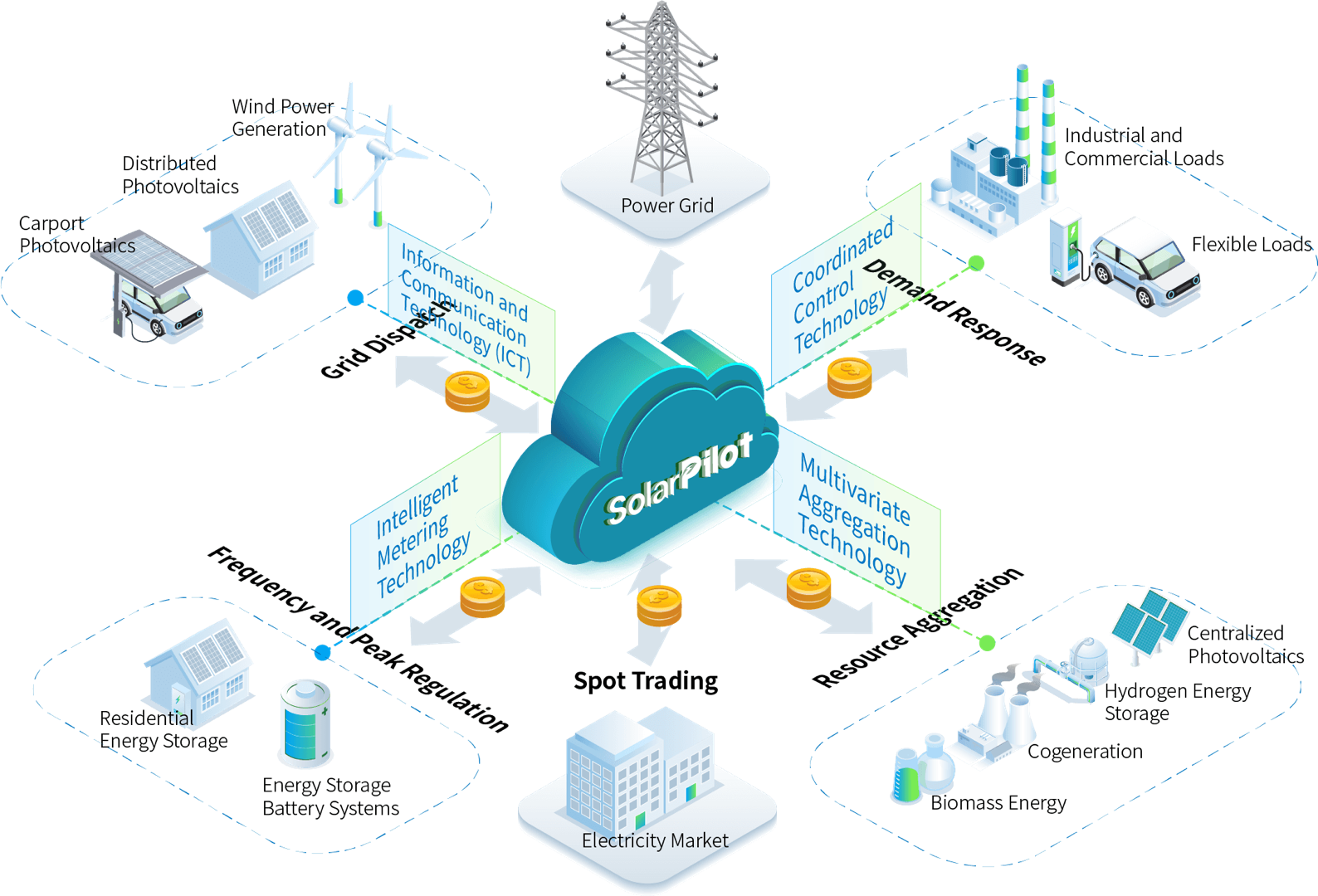
Solution principle
The core of the virtual power plant lies in utilizing energy Internet of Things (IoT) infrastructure to facilitate electricity trading, thereby ensuring power balance and grid stability.

The core of the virtual power plant lies in utilizing energy Internet of Things (IoT) infrastructure to facilitate electricity trading, thereby ensuring power balance and grid stability.
The system adapts to a variety of distributed resources, achieving free data flow, uniform rule operation, global management of scheduling, and three-dimensional protection in terms of security.

A virtual power plant software service developed based on cloud-native architecture, featuring security and stability, flexible integration, smart algorithms, efficient scheduling, and a positive user experience. Performance indicators for the cloud-native architecture can achieve smooth system upgrades through horizontal scaling, easily handling scenarios with large-scale device connections.
The platform can process at least 10,000 pieces of data per second to ensure real-time monitoring of device status.
During the demand response period, real-time control volume monitoring and qualification rate assessment are provided.
The average forecasting accuracy is above 80% to ensure the effectiveness of energy scheduling and optimization.
The system availability is above 99.9%, indicating a very high proportion of normal operating time throughout the year. The fault recovery time should be within 1 hour to ensure timely handling of sudden faults.
The platform supports adjustable loads, charging piles, energy storage, photovoltaics, and other common platforms and protocols in various industries to meet diverse device connection needs.
The incidence rate of security events is less than 0.1%, and the number of data leakage incidents should be 0, to ensure system security and data protection.

supports multiple IoT protocol access, collaborates with cloud-based management of smart devices
open models and mechanism models imported into the APE application empowerment platform
deploy cloud-native applications efficiently through virtualization technologies like containers
secure encryption technology that provides multiple data protection
provides adaptive AI computing acceleration capabilities
adopts cloud-edge integrated time series databases
Welcome to the Solar Pilot website. In order to provide you with a better user experience and ensure the proper functioning of the website, we use Cookie technology to collect and process information about you. This Cookie Statement will explain to you the purposes, types, and choices you have regarding the use of cookies while using the website.